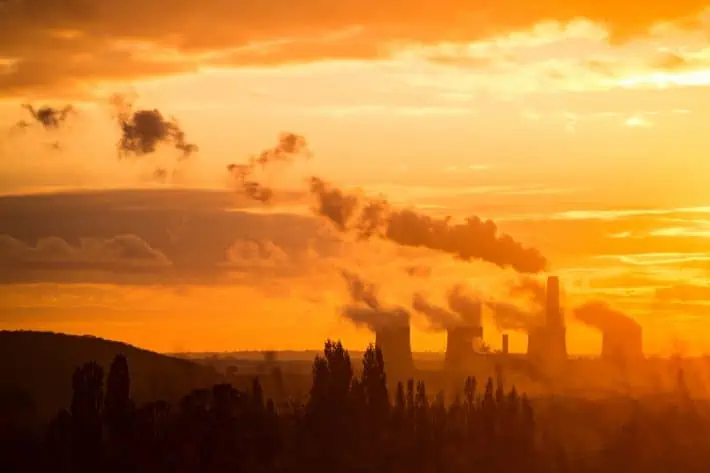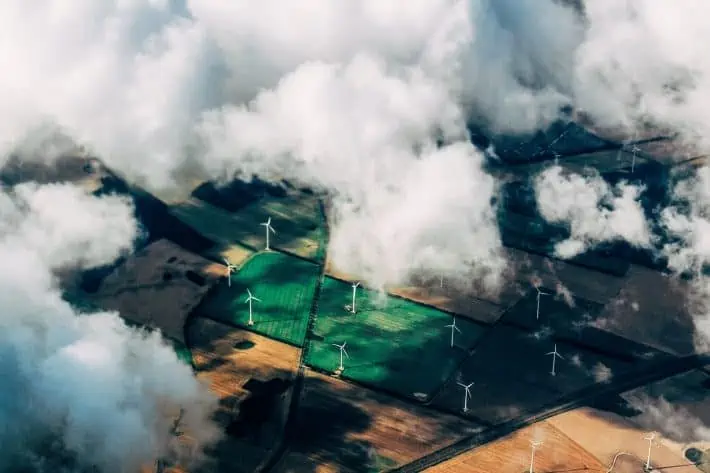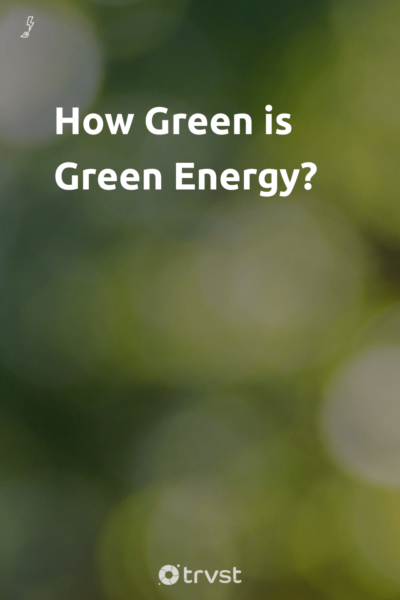How Green Is Green Energy? Is Green Energy As Green As We Think?
Fossil fuels have powered us for many decades. As we all know, they are not particularly kind to the environment. Our reliance on fossil fuels is changing as we seek to reverse the damage caused to the environment.
Following decades of Co2 emissions entering the atmosphere, there have been changes to weather patterns, as well as to wildlife behavior and knock-on problems with our health. This has all resulted in an uptake in green energy. So we ask the question, how green is green energy really?

Green energy is undoubtedly a cleaner form of energy. As renewable energy technologies have developed, the ability to implement green energy on a broader scale has improved. We can now rely on green energy from the likes of wind, solar and hydro. Despite this, do these alternatives offer a renewable source that really is as good for the environment as scientists suggest?
So, is green energy better for us and the environment?
Why Green Energy Really is Green
It is Completely Renewable
First of all, green energy is a type of renewable energy which means that it will never run out. Whether wind, solar, hydro, or other green energy sources, we know that there is an unlimited supply.
Solar farms are becoming a common sign in the UK1, and even homeowners have the chance to make use of feed-in energy tariffs (contributing energy generated at home from solar and the like back to the grid).
Energy suppliers are now beginning to recognize the importance of switching to green energy. The push to increase electricity generation using a renewable energy supply is further driven by substantial government targets5. In time, we will experience the phase-out of traditional energy sources and a reduction in environmental damage.
Zero Emissions
Generating energy using old-fashioned techniques creates a lot of gases that are harmful to the environment and contribute to climate change. In contrast, green energy does not present this problem.
As long as the wind continues to blow and the sun continues to shine, it will be possible to generate energy with little or no harmful by-products. The same can be said for many other forms of green energy.
Green energy aims to eventually provide a usable and scalable solution to traditional energy sources. Lower carbon generating electricity is also better for our health2, which is a significant positive for lowering emissions. In 2016 alone, 4.2 million deaths worldwide were attributed to air pollution.
Less Machinery. Less Damage
In the generation of energy through wind turbines or solar, the energy source is free and in abundance, making it far less damaging. Compared to older methods of generating power, the machinery and techniques are efficient and effective and require very few moving parts.
There are little running costs and fewer requirements for the workforce to keep the machinery running. Traditional methods would rely on machinery to run constantly, which would require power. As a result, it would cause further harmful emissions to be emitted as a result. Effectively, green energy is far greener from the source right through the entire process to the generation of energy.
Low Maintenance
Any energy company that offers green energy will benefit from reduced maintenance requirements. For the environment, this means that facilities are more than likely to run with less equipment.
Technological advancements have led to improvements in renewable solar and wind energy systems. Therefore, the systems are far less likely to face the same problems as traditional equipment.
While the energy is cleaner, maintenance is reduced, which means a decrease in harmful by-products. For example, the new generation of turbines used to generate wind energy are becoming taller and larger, resulting in increased capacity.
Traditional energy sources and the systems used to generate the energy would often require new parts. Therefore, manufacturing, delivery, and installation would all contribute to the environmental cost of generating traditional energy. One small exception to this could be off-shore wind farms due to the location, although there is a belief that in the long run, they will become cost-efficient from a maintenance perspective.
Wind Power and Solar Power are Low Risk
Once the wind and solar farms have been installed, they can begin generating energy. These stand-alone farms are a lower risk as the raw materials are always present (weather accepted), unlike coal, gas, or nuclear, which rely on imported materials for electricity generation and are also non-sustainable sources.
Green energy often requires less on-site management, which enhances its 'Green' credibility. The abundant wind on land and out at sea provides endless possibilities. With risks almost completely mitigated, they are both feasible alternatives to fossil fuel generation while helping address the global environmental concerns associated with fossil fuels.

Why Green Energy Might Not be as Green as We Think
Impact on the Landscape
There are many ways to interpret the meaning of 'green' concerning green energy. Does it relate to the harmful impact of gases alone? Or does it relate to the impact on the landscape? If this is the case, then many might not consider it as green as they once thought. Further, if green energy is to become mainstream, then large geographical areas will have to be cleared to make way for the likes of solar and wind farms3.
To do so might involve clearing trees, grassland, and other forms of land. We know trees play a vital role in removing CO2 from the atmosphere. Despite this, if trees have to be cut to make way for new farms, then it could be counterproductive. Clearly, there are consequences that could come with installing solar farms or wind farms.
Meanwhile, a small number of innovators are proving that green energy can actually be attractive through art. And at the same time, it helps increase awareness of the advantages of renewable green energy.
More reading: Environmental impact of solar energy & environmental impact of hydropower.
Green Energy Remains an Emerging Technology
The renewable energy industry's production of wind, solar, and even hydro farms all impact the environment. Of course, they all require materials. And they all have to go through a specific manufacturing process.
There are also transportation, delivery, and installation of green energy solutions to consider.
Harmful gases are emitted into the atmosphere at every stage of the process. Whether at the manufacturing stage or during delivery, the environment experiences some form of damage. Therefore, the entire process is not carbon neutral. So, some might say that these technologies must make up some ground before becoming entirely carbon neutral.
Future Promise
So, green energy is a game-changer. The generation of cleaner energy that releases a fraction of harmful emissions compared to other forms of energy is in progress.
Needless to say, there are many benefits to using renewable energy. However, there is still a lot of work to be done. As we scale up renewable energy, life cycle assessments are underway to provide opportunities for improvement4. Technology is evolving, so the energy will become even greener, increasingly meeting growing energy demands.
Despite this, manufacturing green energy technology still relies on damaging energy sources. Regardless, the progress is impressive, and it can only get better.
As time goes on, every aspect of the process will improve and hopefully lead to a true 'carbon neutral' process from start to finish while serving our energy needs from the different types of sustainable renewable energy. And that will be better for the environment and our planet.
| 1 | Joss J.W. Watson, Malcolm D. Hudson, Regional Scale wind farm and solar farm suitability assessment using GIS-assisted multi-criteria evaluation, Landscape and Urban Planning, Volume 138, 2015, Pages 20-31, ISSN 0169-2046, https://doi.org/10.1016/j.landurbplan.2015.02.001. |
| 2 | Thomas Gibon et al 2017. Health benefits, ecological threats of low-carbon electricity. Environ. Res. Lett. 12 034023. https://doi.org/10.1088/1748-9326/aa6047 |
| 3 | Theocharis Tsoutsos, Niki Frantzeskaki, Vassilis Gekas, Environmental impacts from the solar energy technologies, Energy Policy, Volume 33, Issue 3, 2005, Pages 289-296, ISSN 0301-4215, https://doi.org/10.1016/S0301-4215(03)00241-6. |
| 4 | Adnan Midilli, Ibrahim Dincer, Murat Ay, Green energy strategies for sustainable development, Energy Policy, Volume 34, Issue 18, 2006, Pages 3623-3633, ISSN 0301-4215, https://doi.org/10.1016/j.enpol.2005.08.003. |
| 5 | UK Renewable Energy Roadmap |

